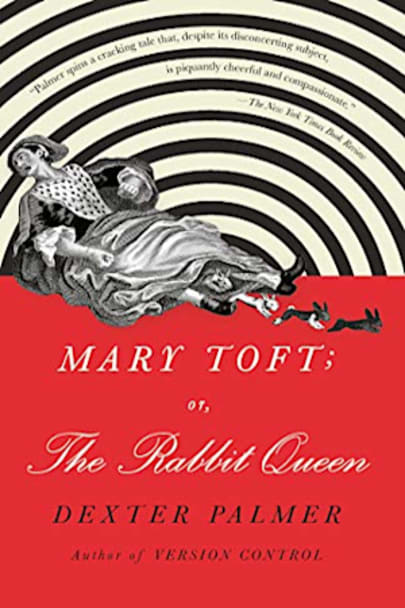In 1726, in the town of Godalming, England, a woman confounded the nation’s medical community by giving birth to seventeen rabbits. This astonishing true story is the basis for Dexter Palmer’s stunning, powerfully evocative new novel. Surgeon’s apprentice Zachary Walsh knows that his master, John Howard, prides himself on his rationality. But John cannot explain how or why Mary Toft, the wife … Toft, the wife of a local journeyman, has managed to give birth to a dead rabbit. When this singular event becomes a regular occurrence, John and Zachary realize that nothing in their experience as rural physicians has prepared them to deal with a situation like this—strange, troubling, and possibly miraculous. John contacts several of London’s finest surgeons, three of whom soon arrive in Godalming to observe, argue, and perhaps use the case to cultivate their own fame.
When King George I learns of Mary’s plight, she and her doctors are summoned to London, where Zachary experiences a world far removed from his small-town existence and is exposed to some of the darkest corners of the human soul. All the while Mary lies in bed, as doubts begin to blossom among her caretakers and a growing group of onlookers waits with impatience for another birth, another miracle.
more



I had two particular reasons for wanting to read this book. One, I had ancestors living in Godalming during this period and they may well have viewed this phenomenon (I even have a 7xGGrandmother from this town with the same name – Mary Harte nee Toft c1657-1724). Two, as a volunteer at Clandon Park near Guildford, I had heard of this case as Thomas Onslow, 2nd Baron Onslow had investigated the hoax and we had papers about it in the library – unfortunately Thomas does not figure in this story.
Split into parts, most of the story is told from the viewpoint of Zachary Walsh apprentice to John Howard, a Godalming surgeon. Occasionally we hear from John himself and in two chapters from Mary.
Despite this being a work of fiction and a way of describing the hoax that was perpetuated on the people of Godalming and the wider population, I found this hard going and if I hadn’t committed to read it, I may well have given up a quarter of the way through. It is not a particularly light read, as might conceivably be expected when you think of what this woman (or her relatives) were putting her body through and the sheer pain of both the insertion and later the ejection of the rabbit parts. However the worst, for me, was the disgusting performance that Zachary attended in London which was absolutely sickening and I didn’t understand what it added to the story; except that there are some members of society that are vile.
I voluntarily read and reviewed an advanced copy of this book from NetGalley. All thoughts and opinions are my own.
definitely book club material…
It took me a week to read this amazing book. SO beautifully written and thoughtful. Definitely literary fiction, Palmer is so talented I was just blown away at points. The 18th century world is brilliantly brought to life and there is a lot to consider about the nature of belief, duplicity and the psychology of the masses. Loved it.
Are you kidding me?
A beautifully written, slyly profound meditation on perception and reality. I relished each immersive scene, each detail. I wanted to sit and discuss with the characters their beliefs about the world. Reading it, I was torn between wanting to gobble it all up quickly or savor it over time.
Mary Toft is wonderful! The kind of novel that you want to read and then discuss with other readers. But then Dexter Palmer is a writer like Hilary Mantel or Kate Atkinson, able to move between genres and time periods, by virtue of the almost supernatural sympathy he is able to invoke for his characters and the sense of the worlds they inhabit.
Mary Toft; or, The Rabbit Queen is provoking in ways that reach well beyond the premise, anticipating as it does our own ‘world of ash,’ with all its spectacle, factionalism, and noise. It is vividly composed and audaciously imagined, filled with characters who do battle against a world that perceives them as strange — or who, conversely, assume strangeness as a mask in order to induce the world to see them at all. It is yet another wonder in Dexter Palmer’s cabinet of wonders.